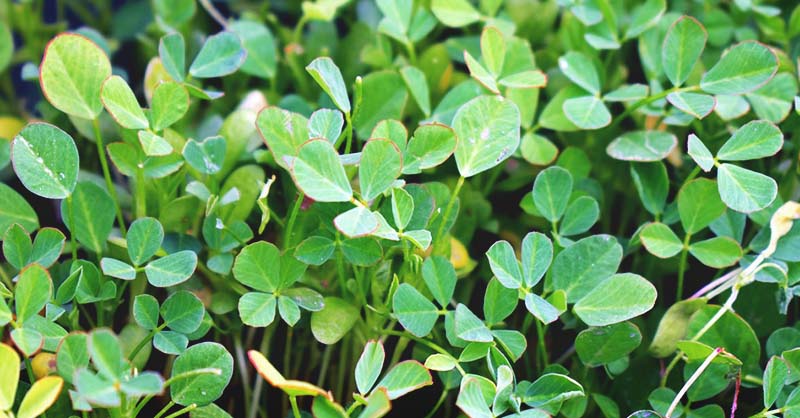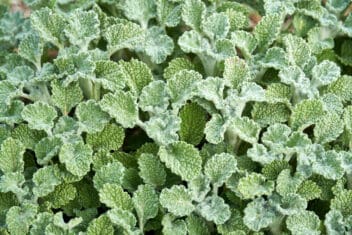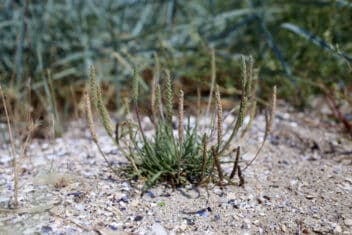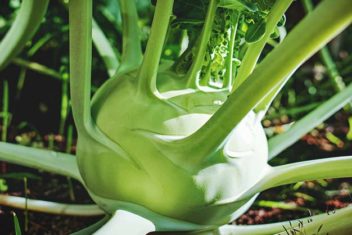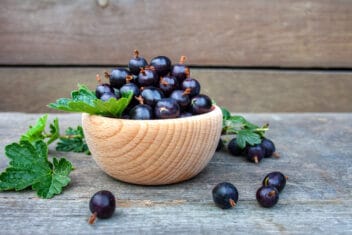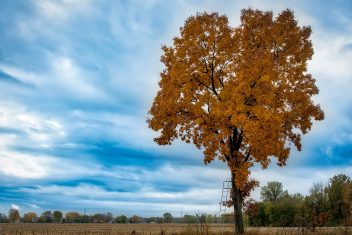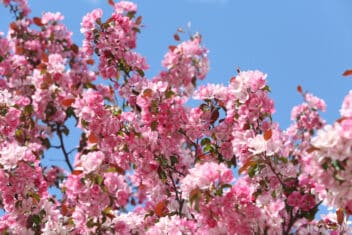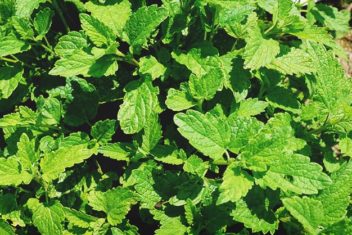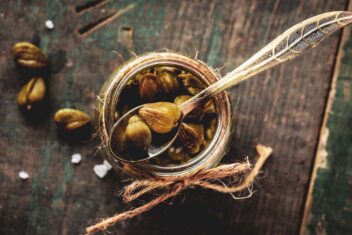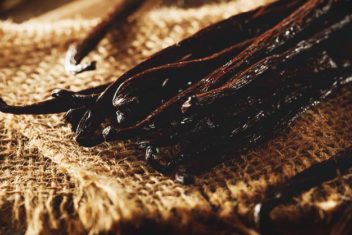Conjure the scent of that “maple-flavored” syrup you put on pancakes as a child. You know, that comforting, caramelized candy scented stuff that wafted across the kitchen entrancing you to the table. Do you remember your anticipation as you pulled the top and smothered pillowy golden pancakes in a brown glaze?
Well, chances are that incredible aroma wasn’t from real maple. It is more likely that the syrup was made from corn syrup and the fragrance was derived from fenugreek seeds.
Even though my personal tastes now run to 100% grade A maple syrup, I still savor the scent of that supermarket syrup substitute. Now though, I prefer to add that amazing aroma to pumpkin and winter squash dishes, to any of my Indian-inspired cuisine, and to a host of spicy/savory soups I serve as comfort food.
If you want to bring that waft of childhood nostalgia to your grown-up healthy cooking, then you need to start growing fenugreek leaves and seeds at home.
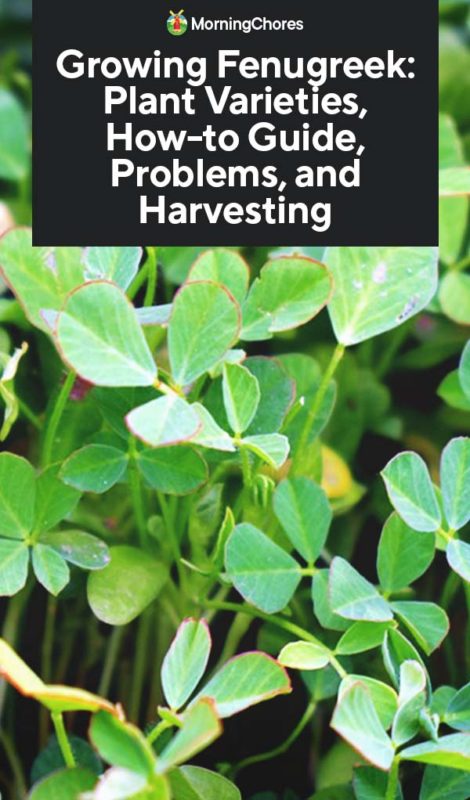
The History of Fenugreek
Fenugreek has been in use since antiquity. Some roasted seeds found in Iran date back to at least 4000 BC. Dried seeds were found in the tomb of Tutankhamun from around 1323 BC. Romans supposedly used it to flavor wine.
Its name, though, means “Greek hay” and it has been used as a legume to feed cattle for thousands of years. Today, most of the world’s fenugreek production occurs in India with Rajasthan, a northern state, providing about 80% of what the country produces. However, it can also be easily grown at home.
Varieties of Fenugreek
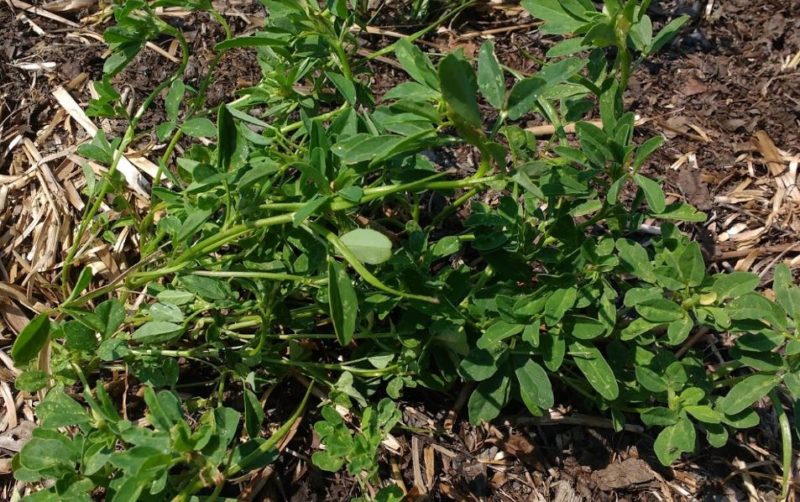
Unless you are a commercial grower in India, it’s nearly impossible to find different official varieties of fenugreek. However, depending on where you source your seeds, your plants may exhibit different characteristics.
If you buy fenugreek as a cover crop, those seeds will tend to produce more leaves for longer and should be good for multiple harvests. If you buy from seed companies that supply primarily home gardeners you can tell a lot from the descriptions and photos.
For example, if the seeds are called methi rather than fenugreek, they may produce more leaves. Similar to cilantro and coriander, fenugreek primarily refers to the seed while the term ‘methi’ refers to the leaves.
Look for descriptions that best match your growing fenugreek goals. If you really just want seeds, buy seeds from distributors that proclaim prolific seed production and large pods. For leaves, look for descriptions like ‘large leaf size’ and ‘multiple harvests.’
Planting and Growing Fenugreek
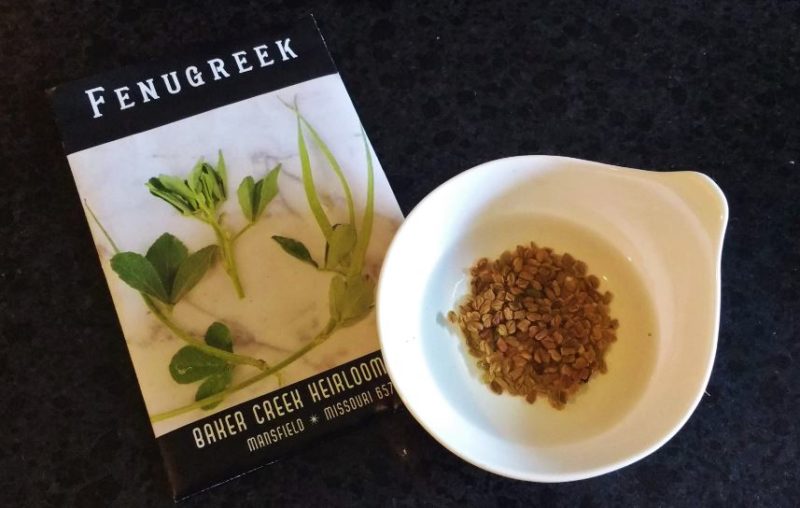
Fenugreek is the ultimate herb for beginners. It can be grown in shallow containers and directly in the ground. It can be planted whenever temperatures are between 50-90ºF. Plus, it’s ready to harvest in 20-40 days.
USDA Zones
Fenugreek can be grown as a seasonal annual in all USDA zones as long as you will have at least 40 days of temperatures ranging between 50-90ºF or provide sufficient light and heat indoors. It can also be grown in winter in USDA zones 10-12.
Sun Requirements
Fenugreek prefers full sun but will grow in partial sun or partial afternoon shade, though shady conditions may lead to more fungal pathogen problems.
Soil
Like most legumes, fenugreek will tolerate a wide variety of soil types. However, for best results, it should be planted in well-prepared garden soil that has been amended with compost. It only requires moderate fertility and will not grow well in soil that has excess nitrogen.
Seed Starting
Seeds should be planted about ¼-inch deep. You can pre-soak the seeds for 4-24 hours to expedite germination.
I’ve had the best luck soaking seeds for about 8 hours. Germination in soil tends to happen about 24-48 hours after soaking for that time period.
When I have soaked the seeds longer, some seeds germinate in water. For most plants, water germinated seedlings tend to do fine when transplanted. However, for fenugreek, I’ve noticed that the mature plants seem to be stronger if they germinate in the soil.
Spacing
Most planting guides recommend giving each plant 6-inches of space in all directions. In a cool climate, or if grown during extended cool periods, this spacing works well because plants develop large leaves and occupy the space.
Personally, I grow fenugreek in all sorts of conditions. In hot weather with long sunny days, the leaves simply don’t seem to get that large and the area looks very bare if you plant that far apart.
So, for late spring to early fall fenugreek growing, I like to put a few seeds in the same hole and grow 3-4 plants together as a mass. Then I give that grouping of fenugreek about a square foot of space. That allows the roots plenty of room to grow away from each other to seek nutrients and water.
Fenugreek Care
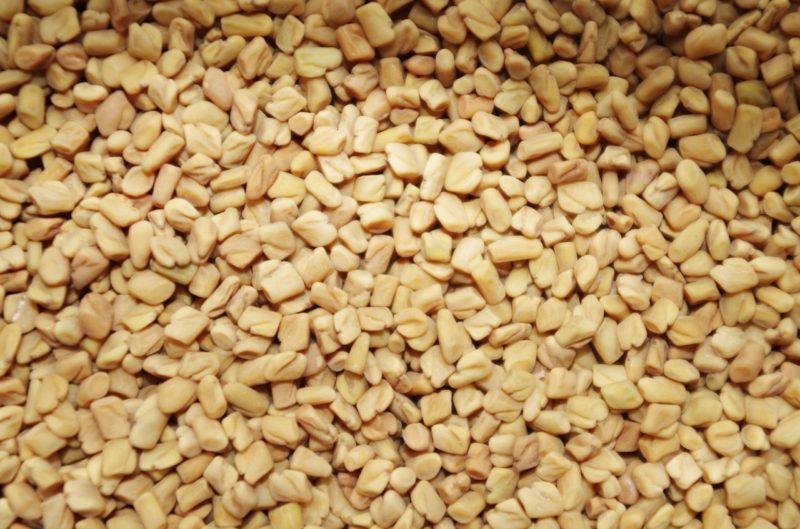
Fenugreek is extremely easy to grow as long as you keep the soil around it moist and minimize weed pressure.
Watering
Fenugreek needs consistent moisture for healthy, disease-resistant plants. Watering about every 3 days when there’s no rain, has resulted in the best production in my garden. After seed pods develop, I drop down to watering once a week until the pods are ready to harvest.
A watering can with a diffuser nozzle disperses water around the root zone without disturbing the plant. Drip and soaker hose systems also work well for routine irrigation.
Avoid flooding the roots of fenugreek though as the plant is susceptible to root rot. So running a hose without a shower sprayer attachment is not ideal for watering your fenugreek plants.
Weeding and Mulching
You will need to minimize weeds around this plant for good production. However, you want to be careful not to disturb the root system of the fenugreek.
Since this plant is quick to germinate, establish, and set seeds it often doesn’t develop deep and entrenched roots. So, pulling weeds can disturb the delicate roots of fenugreek.
I weed the bed before planting. Then I use mulch, such as leaf mold, to side-dress the plants after they emerge and suppress weed seed germination. If weeds emerge, you can clip them at the head with scissors to keep them in check until you harvest your fenugreek.
Fertilizing
This plant really only needs some well-aged compost to grow well. You don’t want to add any kind of fast-acting fertilizer for good production. Excess nitrogen will stunt these plants.
If plants need a mid-season fertility boost, compost tea is your best bet to stimulate growth. Just add 1 part compost tea to every 8 parts water in your watering can and moisten the soil like usual. You can also use low nitrogen, high beneficial bacteria fertilizers like fish emulsion to perk plants up in extended hot or dry periods.
Common Problems
Fenugreek has very few problems in an organic garden. The slightly bitter, spicy taste to the leaves tends to deter varmints and deer. From my experience, even bean beetles don’t seem to realize this plant is a legume. However, there are a few things to be on the lookout for.
Common Pests of Fenugreek
– Problem: Aphids
Aphids tend to go after just about everything in the garden at some point, even fenugreek. They don’t usually cause much damage to seed pods. However, if you are growing Fenugreek for leaves, they make eating methi seem pretty unappetizing.
– Solution
Fortunately treating aphids is incredibly easy. Just use a soft cloth and some soapy water to wash them off. Then, drench your plant with water to eliminate the soap.
Note: Don’t shoot these plants with a strong hose spray like you might for aphid infestations on other plants. The plants aren’t usually deep-rooted enough to withstand that kind of pressure.
– Problem: Flea Beetles
Flea beetles are about the most troublesome pest in my garden. They are so tiny and fast that it’s difficult to control them. Luckily, they don’t tend to do much damage to healthy plants.
In the case of fenugreek though, the leaves are small and so even a little flea beetle damage can make the plant aesthetically unappealing.
– Solution
Honestly, the only answer I know that works every time is growing fenugreek under floating row covers. Some gardeners also use a 70% mix of neem oil spray with some success. However, you have to reapply every 7-10 days for continued protection.
To reduce the overall population of flea beetles in your garden, there are also things you can do such as hanging sticky strips during mating season, using tape to collect the beetles from the undersides of leaves in the early morning, and introducing beneficial nematodes into your garden soil to control the larvae.
Common Diseases of Fenugreek
Fenugreek can potentially host any disease common to other legumes. However, there are only a few that growers really need to worry about. Thankfully, most can be controlled with good cultural practices.
– Problem: Powdery Mildew
Powdery mildew is a fungal infection that can reduce plant production by up to 30% and negatively impacts the plant’s appearance.
– Solution
Powdery mildew is easier to prevent than treat. Ensuring plants are grown in full sun with good air circulation, will reduce risk. Also, making sure the soil is consistently moist and doesn’t alternate between drought and drenching will help.
For homesteaders who make cheese, using a gentle spray bottle to coat plant leaves with a 50/50 mix of water and whey, every few days when plants are at risk can also provide a measure of protection. (Note, this is not yet proven by science, but it has worked exceptionally well in my garden for a number of powdery mildew susceptible plants).
– Problem: Cercospora Leaf Spot
Cercospora leaf spot is another potentially damaging fungal pathogen that can reduce your crop of methi leaves and damage seed pods.
– Solution
Growing fenugreek in temperatures that stay consistently below 70ºF is your best preventative for avoiding this fungal disease. Using certified seeds from a reputable source or pre-treating seeds with fungicides can help. Also, in extreme cases spraying fungicides may be necessary.
Good crop rotation is also key. Don’t plant fenugreek in areas where other legumes have been for at least three years to reduce risks.
– Problem: Charcoal Root Rot
Charcoal root rot is aptly named after the appearance of the disease as it makes its way up the inside of the plant stem to its leaves. You’ll need to cut open the stem to see the damage. However, the appearance of the desiccation of the outer parts is usually what makes people notice the plant has a problem.
This plant disease is most commonly discussed in reference to soybeans but can be a problem for other legumes, including fenugreek, as well.
– Solution
Fungicides are ineffective in treating this pathogen. So, if you suspect an infection, your best bet is to pull impacted plants and avoid planting legumes in that area for at least 3 years.
Again though, prevention is possible by growing fenugreek in cooler temperatures and keeping the soil consistently moist. In ideal conditions, this pathogen is much less likely to get a foothold in your garden.
Also, amending your soil with well-aged compost and neem meal or cake might dilute and suppress some development of the pathogen.
Companion Planting
Fenugreek is not a particularly common plant to grow in the garden. However, it is gaining popularity as more and more of us begin to grow our own herbs and spices. As such, there are not many confirmed companion plants for fenugreek at this point.
My own garden research suggests that given the similarities between fenugreek and soybeans, they tend to have similar plant incompatibilities. Here are my best suggestions for fenugreek.
Best Companions
Worst Companions
I also tend to avoid planting any legume next to members of the allium family. These include:
- Bulb Onion
- Spring Onions
- Garlic
- Shallots
- Chives
- Egyptian Walking Onions
Harvest and Storing
The harvest procedures for seeds versus leaves are very different.
Harvesting Leaves
If you want to eat the leaves, you can remove the older leaves first and leave the younger leaves in place to continue growing fenugreek.
You can also harvest the entire plant and then succession plant replacements for leaves. Many people will even grow these as microgreens and eat the roots as well.
Leaves can be eaten fresh in salads or added to curry dishes. They can also be dried to use as seasoning later. Dried herbs tend to have a shelf life of 6 months to a year at best depending on how often you open and close your container.
Harvesting Seeds
If you are growing fenugreek for seeds, you’ll get fatter seed pods and faster production if you don’t harvest any leaves. That’s why it’s a good idea to grow some fenugreek plants only for leaves. Then, reserve some to grow unharvested for good seed production.
When harvesting the seeds, wait until the pods plump and begin to yellow. Then you can harvest the pods. Let them fully dry. Then, split the pods and harvest the seeds. In dry areas, you can let the pods dry on the plant if you don’t have any pest issues.
Store the dried seeds in an airtight container out of direct light and in a cool place with limited temperature fluctuations. To really express the flavor of the seeds they need to be roasted. However similar to coffee, they will taste better if you wait to roast the seeds right before you use them.
To roast, heat up a cast iron pan and toss them in for a few minutes. Turn them each time they start to smell like brown sugar until all sides are lightly browned. Then use your seeds immediately in your favorite recipes.
